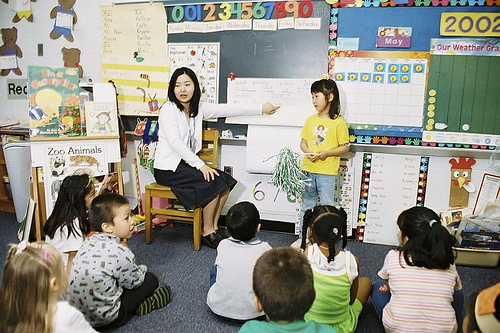Schools are still segregated in Maryland, and state legislators want that to change
Studies have shown that while our country is becoming more ethnically diverse, our schools have become more segregated. In fact, studies by the Civil Rights Project have found that Maryland to be among the most-segregated state in the country for black students. A bill hoping to change that just passed through the Maryland state legislature.
Segregation is still a problem in our schools
I am an elementary school teacher in Prince George’s County. In our school of over 700 students, nearly 90 percent of whom qualify for free and reduced meals. We have fewer than ten white non-Hispanic children, and most of our students speak Spanish as their first language.
It’s not that we do not have white or middle class children in our neighborhood. But at present, the majority of these families are choosing private schools, charter schools, magnet programs or homeschooling. They do anything to avoid sending their kids to the predominantly low-income local public school.
Looking at Prince George’s County on the whole, nine out of 10 black students attend a school where at least 90 percent of students are minorities. Nearly four out of 10 black students attend what the Civil Rights Project report called “apartheid schools,” where more than 99% of the school is African American; nearly all of the 400 “apartheid schools” are in Prince George’s County or Baltimore City.
As early as the 1960s, we have understood that the two greatest predictors of student academic success are the socioeconomic status of the student’s family, and the socioeconomic status of the student’s peers. That is to say that low-income children who attend mixed income schools will achieve at higher rates.
With a state as segregated as ours, it is no wonder that Maryland’s achievement gap is also one of the greatest in the country. According to our 2013 NAEP (National Assessment of Educational Progress) scores, the gap in average math scores between black and white fourth-graders in Maryland was the fifth-worst in the nation, and in reading the gap was the ninth-worst.
A new program called EDCo wants to confront these issues
Senator Bill Ferguson, a democrat from Baltimore City, proposed legislation to create the Maryland Education Development Collaborative (EDCo). The collaborative would make recommendations to the state Board of Education, the General Assembly, and local school systems about how to make schools more diverse in terms of socioeconomics and demographics.
The EDCo bill has now moved through the Maryland state legislature. If signed by the Governor, the new educational entity will be a big step to addressing the greatest civil rights issue and roadblock to educational equity in our state: socioeconomic segregation.
While equitable education is elusive, there’s plenty of reason to think it’s not impossible. The challenge is collecting, analyzing and sharing best policies and practices across schools, districts and regions.
In 1998 the Maryland Legislature founded TEDCo (Technology Development Corporation) to foster innovation and entrepreneurship communities across the state. In under two decades, the organization has created thousands of jobs and impacted hundreds of companies through granting and mentoring programs. The goal with EDCo is to bring the same level of growth and innovation to the field of education by connecting universities, research institutions, venture capitalists, and school districts. Hopefully, this would mean turning research into policy and practice.
For example, last year Governor Hogan launched the P-TECH (Pathways in Technology Early College High School) partnership with IBM. EDCo could assess the impact of this collaboration and work to disseminate progress.
Another way that EDCo could help is by developing a model to make magnet programs more inclusive and economically integrated. While magnet programs were designed to diversify schools by drawing students from across boundary lines, the current system in Prince George’s County favors families who are actively engaged in their children’s education by requiring parents to apply. That leaves the neediest children isolated in their increasingly segregated schools.
EDCo would seek to break down these barriers to comprehensive integration by supporting programs that attract a broad demographic clientele, and developing lottery systems that do not discriminate against poor, under-resourced children. Rather than relying on a competitive application or lottery, magnet programs would instead use strong marketing and weighted lotteries to build demographically diverse school populations across the state.
Teachers need an organization that considers broad policy changes
Public school systems aren’t in a great position to push for change because teachers, principals, and superintendents are consumed with making sure they’re educating kids every day. There’s little time or energy to zoom out and think about policy.
An entity like EDCo, on the other hand, can provide perspective, make connections, and help us evolve towards a better future, where all children of all colors and classes learn together in high quality schools that would make any parent proud.

